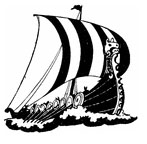
Remembering Erik H. Erikson
HARVARD DIARY
In 1965 my wife, Jane, and I were living in the South, trying to learn how school desegregation was working, and trying to be of help to SNCC, an acronym for the Student Nonviolent Coordinating Committee, a group of white and black youths determined to confront segregationist laws anywhere and everywhere — even in the Delta of Mississippi. Those men and women were the architects, then the builders of the Mississippi Summer Project of 1964, a critical moment, indeed, in the civil rights struggle. By then I’d wandered rather far from my chosen profession of child psychiatry and psychoanalysis, and not only out of a strong involvement in an ongoing social and racial struggle. I had gone South, initially, as a young physician who had to put in his two years in the military under the doctor’s draft that then fingered all of us as we finished our internships or various stages of our residencies. I had started out becoming a pediatrician, and ended up a child psychiatrist — and in so doing, witnessed the good and bad in a particular profession: the opportunity to work with children, learn from them, offer back to them such knowledge, and offer, too, a chance for shared contemplation, introspection; but also the temptation, not rarely embraced, toward smugness and self-importance, toward an overwrought intellectuality that took the troubles of families and made of them the stuff of clever, overblown, overriding theory. It was such a pleasure, during the couple of years in the Air Force, and those later, the years of working with Southern children and young activists, to be at a bit of remove from all the heavy conferences, the heady colloquia with concepts and generalizations and abstractions around everywhere and all the time.
Still, the civil rights struggle slowly began to achieve its initial political purposes, and many of us white folks began to realize by the middle 1960s that we’d best try to figure out how to resume our lives — say goodbye to the intense (at times, nonstop) life of political struggle that had engaged us for so long. One day in the spring of 1965 I received a letter from Erik H. Erikson — a short one, indeed. He had heard from a mutual friend of the work Jane and I were doing, and he wondered if I would ever be near Cambridge — if so, he’d like to meet. A great and wonderful surprise for me — I had admired his Childhood and Society and his Young Man Luther, and to hear from him (he was about 30 years older than I) was to hear from a great man, a god-like figure in my professional life. I was stunned, then nervously apprehensive. Who can ever live up to the expectations one develops with respect to one’s heroes — meaning, ultimately, one’s expectations of oneself?
In no time I was sitting in Erikson’s Widener Library study at Harvard. I’d come there as he was approaching 60 — he who had never gone to college, let alone graduate school. (He lasted less than a decade as a professor — he could be quite impatient with academic pride and pomposity and pretense, as many of us who listened to him sound off got to know.) He asked me if I’d be interested in teaching in his undergraduate course, and I accepted the offer eagerly, hungrily — a chance to go back to school, read books that mattered, study again, now with a psychoanalyst who had dared take seriously not only the workings of family life, but the influence exerted by us on the world: one’s class and race and sex, as they give shape to one’s life; and yes, one’s religious and spiritual life, for that, too, Erikson knew, matters a lot, has a lot to do with our values, our choices, our manner of living.
You May Also Enjoy
I first met Christopher Lasch in the middle 1960s. My wife, Jane, and I had…
Elderly folks I once knew were proud of their indifference to the urban American world and its culture, its values and habits, of which they occasionally heard from their children.
I have been making some snide remarks in recent columns about the talk shows that…

